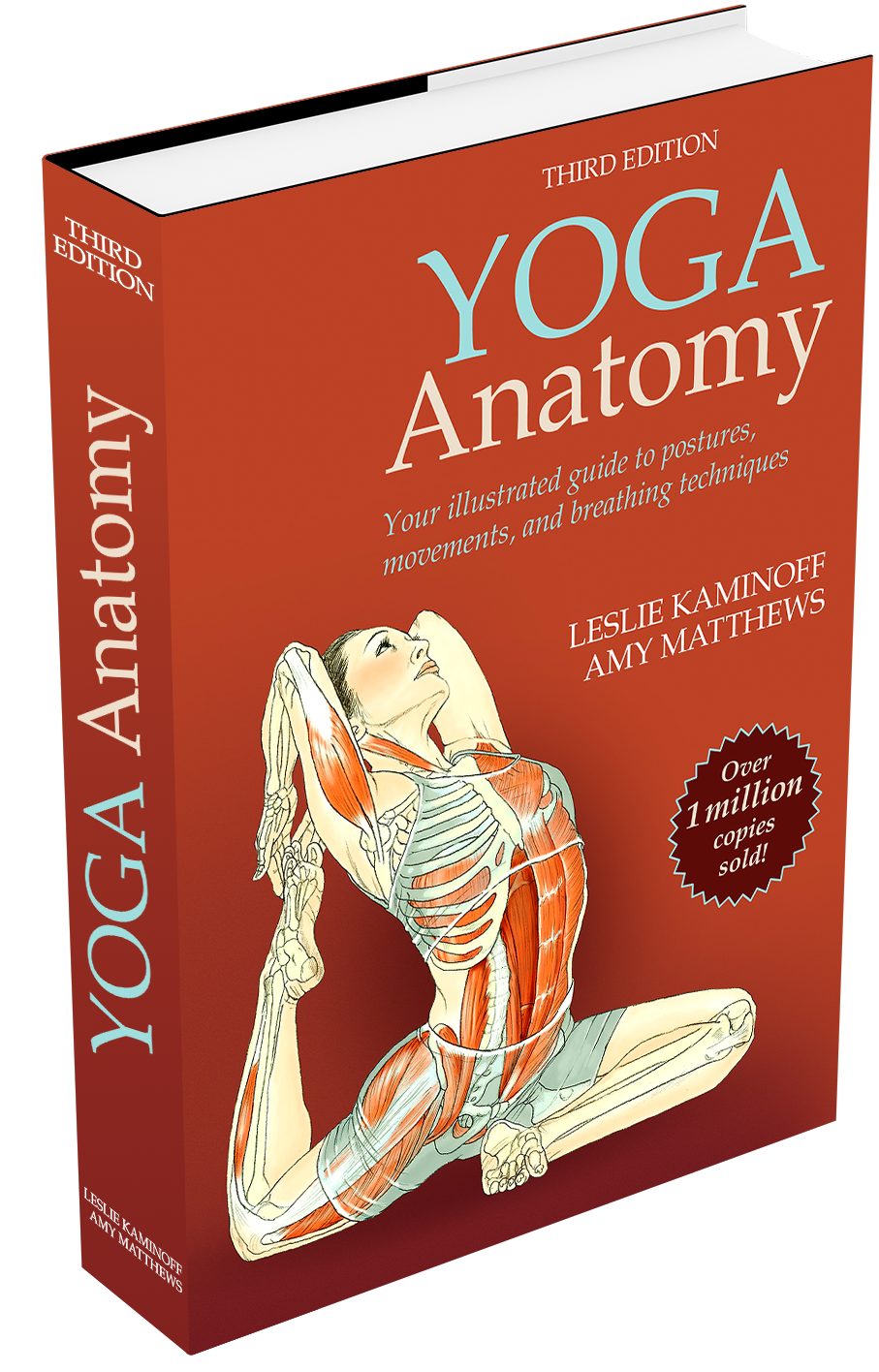Baddha Konasana

Notes
Much as in paschimottanasana, if the focus is too much on getting the head down, the resulting action is more spinal (flexion) than pelvic (SI and hip joints). For this reason, the intention should not be to get the head to the feet, but to get the navel to the feet.
The activity of the obturator internus in this pose also activates the muscles of the pelvicfloor, which can anchor the base of the pose.
Depending on how close the feet are to the groin, different external rotators are activated to assist with rotating the legs out, and different adductors are lengthened. The more the knees are extended, the more the gracilis is lengthened. Because the adductor longus and brevis work to flex and externally rotate the leg, the abduction in the pose lengthens these two muscles of the adductor group. Thus, it’s quite valuable to work with the feet at different distances from the pelvis. Closer isn’t always better.
Baddha Konasana can be challenging for the knees. The supination of the feet (soles toward the ceiling) causes a rotation of the tibia that, combined with flexion, destabilizes the ligamentous support for the knees. If the hips are not very mobile and the legs are pushed into this pose, the lower leg torque can travel into the knee joints. One way to protect them is to evert the feet (press the outer edges into the floor). This activates the peroneal muscles, which, via fascial connections, can stabilize the lateral ligaments of the knees and help to keep them from rotating too much. The result is that more of the pose’s action is directed into the hip joints.
Images from the book Yoga Anatomy by Leslie Kaminoff & Amy Matthews displayed on this website are used under license.

Love Learning with Leslie?
Study with him personally online, from anywhere in the world.
Which course is right for me?
